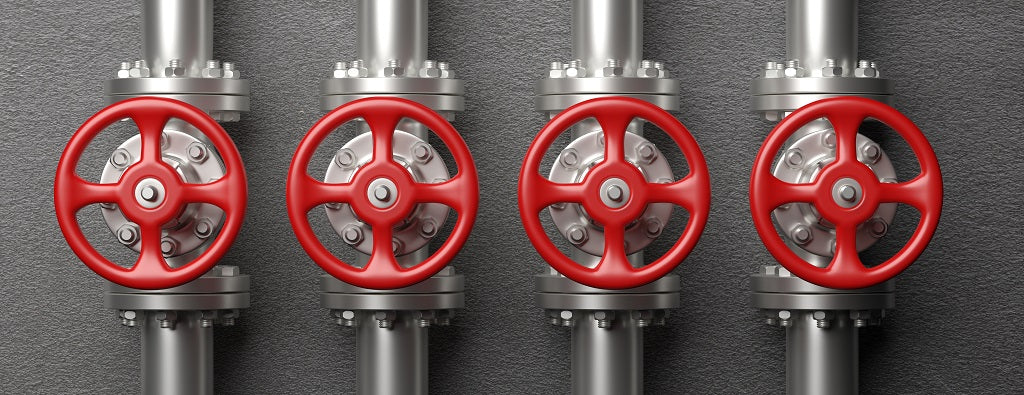Discovering the Performance of Modern Control Valves in Industrial Applications
Discovering the Performance of Modern Control Valves in Industrial Applications
Blog Article

Maximize Energy Cost Savings and Convenience With Advanced Building Automation Controls
In the world of modern architecture and facility management, the integration of innovative structure automation controls stands as a pivotal advancement. By taking advantage of the power of automation, buildings can adapt, react, and advance in methods that were as soon as unthinkable.
Energy Performance Benefits
Energy effectiveness benefits can dramatically reduce power usage and functional prices in structures. Energy-efficient systems, such as advanced structure automation controls, can maximize the use of sources like lights, home heating, and cooling, leading to reduced power expenditures over time.
Furthermore, enhanced energy efficiency can extend the life expectancy of building devices and systems. By operating more successfully, heating and cooling systems, lighting fixture, and various other structure parts experience much less wear and tear, resulting in minimized maintenance and replacement prices. Furthermore, energy-efficient buildings usually command greater home worths and rental rates, giving lasting financial benefits to owners.
Additionally, power performance can improve owner convenience and productivity. Properly regulated indoor settings with optimum lighting and thermal conditions produce an even more enjoyable and helpful office, resulting in enhanced staff member fulfillment and efficiency. Generally, the power effectiveness advantages related to innovative building automation controls are complex, encompassing expense financial savings, environmental stewardship, and occupant well-being.
Boosted Convenience Control
Enhancing comfort control in structure settings needs a sophisticated assimilation of innovative automation systems for ideal resident wellness. By making use of advanced building automation controls, facilities can tailor the indoor setting to meet the details demands and preferences of occupants. control valves.
Enhanced convenience control surpasses basic temperature level modifications. It consists of features such as tailored settings, occupancy sensors, and natural light utilization to develop a vibrant and responsive environment. By integrating these sophisticated controls, structures can not only enhance comfort yet additionally enhance energy effectiveness by optimizing system procedures based upon actual tenancy and use patterns. Inevitably, focusing on resident convenience with advanced automation systems leads to a much more satisfying and much healthier interior atmosphere.
Operational Efficiency Improvements

Furthermore, the implementation of real-time surveillance and analytics tools enables building drivers to recognize power ineffectiveness and functional anomalies immediately. By continually monitoring energy use patterns and system performance metrics, changes can be made in real-time to enhance energy consumption and guarantee peak operational performance. control valves. In addition, including need feedback methods into building automation controls can better boost operational effectiveness by dynamically changing energy use based upon grid problems and rates signals
Indoor Climate Optimization
Reliable indoor environment optimization is a fundamental facet of structure automation controls, ensuring residents' comfort and wellness while making the most of energy financial savings. By utilizing innovative sensors and controls, developing automation systems can continuously change and keep track of temperature, humidity levels, air high quality, and ventilation to produce an optimal interior atmosphere. Preserving comfortable and consistent problems not just improves owner satisfaction but also boosts efficiency and overall wellness.
Indoor environment optimization likewise plays an important role in energy performance. By fine-tuning cooling, ventilation, my sources and heating systems based on real-time information and occupancy patterns, constructing automation controls can considerably lower energy consumption - control valves. For circumstances, carrying out methods such as demand-controlled air flow and thermal zoning can aid reduce energy waste while ensuring that each area of the building obtains the necessary conditioning.

Lasting Setting Development
Building automation manages not only optimize interior climate problems for power performance and resident convenience however additionally lay the foundation for producing a lasting setting via strategic monitoring of systems and sources. By incorporating advanced structure automation modern technologies, such as sensing units, actuators, and intelligent software application, facilities can check and readjust power use in real-time to reduce waste and decrease their carbon footprint. These systems enable anticipating upkeep, determining prospective concerns prior to they escalate and enhancing equipment efficiency to boost long life and performance.
Furthermore, sustainable atmosphere creation prolongs past power monitoring to encompass water preservation, waste reduction, and indoor air quality browse around this site renovation. Building automation controls can control water use, detect leakages, and ensure appropriate garbage disposal practices, adding to general sustainability initiatives. Additionally, by checking and managing ventilation and filtering systems, these modern technologies improve resident health and efficiency while lowering power usage connected with heating and cooling procedures.
Final Thought
To conclude, advanced structure automation regulates offer significant advantages in regards to energy cost savings, comfort control, functional performance, interior environment optimization, and creating a sustainable atmosphere. By implementing these controls, buildings can achieve ideal efficiency while lowering energy intake and boosting passenger comfort. It is obvious that using innovative automation modern technology is vital in boosting structure efficiency and developing a much more sustainable future.
Energy performance advantages can dramatically reduce power consumption and operational expenses in structures. On the whole, the power performance benefits connected with advanced building automation controls are diverse, including cost savings, ecological stewardship, and occupant wellness.
Additionally, integrating need response approaches into building automation controls can further enhance functional performance by dynamically changing energy use based on grid problems and rates signals.
Structure automation controls not just enhance interior environment conditions for energy performance and resident convenience but also lay the structure for creating a sustainable atmosphere through critical management of resources and systems.In final thought, advanced structure automation manages offer considerable benefits in terms of power cost savings, convenience control, operational efficiency, interior environment optimization, and producing a sustainable atmosphere.
Report this page